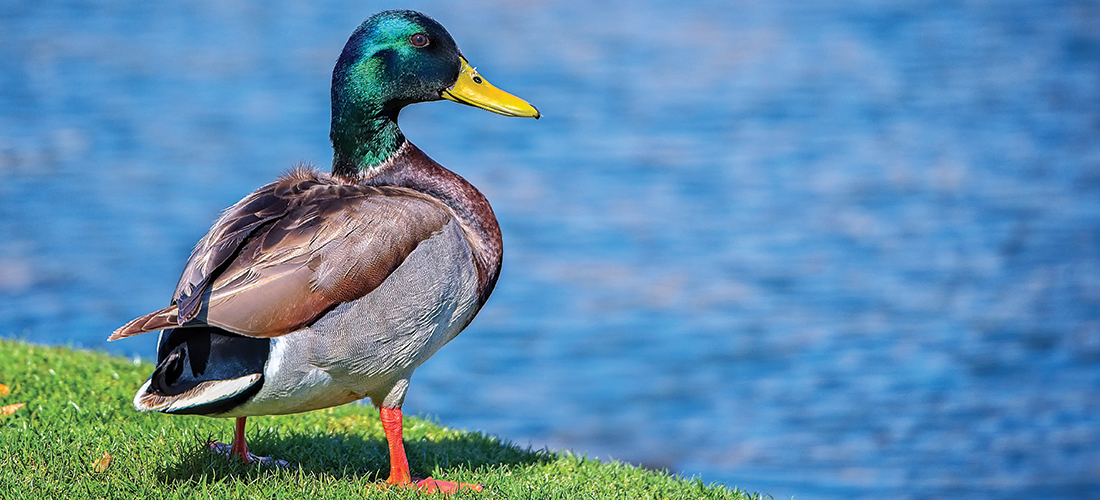
Speed Dating and Mating
For mallards, timing is everything
By Susan Campbell
For some birds — like mallards here in central North Carolina — spring comes early. While other birds are simply eating and sleeping to survive the worst of winter, with little else on their minds, the drakes sporting their finest feathers, and the hens are on the lookout for a safe neighborhood to raise the next generation of ducklings.
Mallards are familiar to just about all of us — found nearly worldwide, thanks in large part to their popularity as a game bird. The males, with their glossy green heads, curly tail feathers and well-known, loud voices are perhaps the most readily identified fowl on the planet. Females, on the other hand, are much less noticeable but still readily identifiable given their mottled plumage, yellow bills and stereotypical “quacks.” The affinity for living and nesting near people is unparalleled. Although a large percentage of mallards found throughout our state have been domesticated to varying degrees, many behave more like their wild cousins than barnyard fowl.
Truly wild mallards are indeed wary and are unlikely to waddle up to arm’s length for handouts. These so-called “puddle ducks” favor forested areas with ponds and small lakes that provide plenty of emergent and submerged vegetation. While foraging, it’s bottoms up for mallards who are given to feeding heads’ down on leaves, shoots and roots in the shallows. You can also see them diving for food below the surface. They’ll feast on invertebrates when abundant, as well as fruits that may fall into the water. Mallards can also digest mast and so may be seen gobbling up nuts (such as acorns on land) in fall and winter too.
Like all waterfowl, mallards pair by early winter. Pairs may be seen swimming in tandem, and you may even catch them copulating, early in the calendar year — well before the mercury begins to rise. Also watch for drakes defending their mates from unmated males in duels that can be quite violent as well as loud. As winter turns to spring, expect the behavior to escalate — not unlike their human counterparts. In the world of waterfowl, males outnumber females by as many as four to one — so competition can be fierce.
By early March the hens will have found a suitable nesting site. Wandering away from the water’s edge, sometimes as much as a quarter mile, a female mallard will create a simple scrape in a protected spot to start her family. She will lay an egg a day until the clutch is complete. She may lay more than a dozen eggs by the time she’s satisfied with her stash. Each morning, after each egg is laid, she will add down from her breast to the clutch to insulate them from the cold. She will also cover them with pine needles or other vegetation that is present in the proximity of the nest to protect them from the elements. But what’s most important is the blanket that will hide the nest from the eyes of potential predators.
Nest placement for mallards is the key to success. Should she be spotted by crows, the eggs will be eaten in short order. If the nest is sniffed out by raccoons or foxes, it will be consumed in no time flat. Therefore, many hens have learned to lay eggs within the thickest of vegetation — or to nest very close to human habitation. I had a mallard nest in the flowerbed literally right outside my front door for several seasons while living on a lake in the Sandhills.
So should you happen to witness mallards courting nearby in the coming weeks, it could mean the appearance of fluffy yellow ducklings by early spring. Indeed the days are lengthening and these well-known birds are quite aware of the importance of timing, even in the absence of a calendar — or smart phone. Imagine that! OH
Susan would love to hear from you. Send wildlife sightings and photos to susan@ncaves.com.





